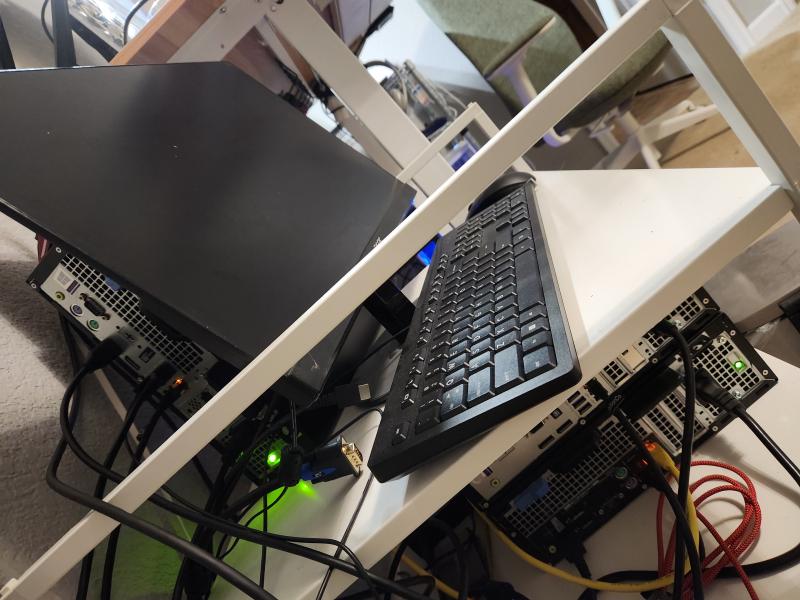This is a written record of how I set up a k3s cluster on some bare metal machines.
References
Components
Three physical servers were used in this setup.
| host | model |
|---|---|
| opx01 | Dell OptiPlex 7050 SFF Intel Core i5-7500 |
| opx02 | Dell OptiPlex 5070 SFF Intel Core i7-9700 |
| opx03 | Dell OptiPlex 7070 SFF Intel Core i7-9700 |
These are the VMs that I run on those hosts. (IPs are arbitrary)
| host | vm name | role | IP |
|---|---|---|---|
| opx01 | kmaster01 | k8s master node | 192.168.1.2 |
| kshare01 | NFS server | 192.168.1.3 | |
| opx02 | kwork02 | k8s worker node | 192.168.1.4 |
| kwork03 | k8s worker node | 192.168.1.5 | |
| kwork04 | k8s worker node | 192.168.1.6 | |
| kwork05 | k8s worker node | 192.168.1.7 | |
| opx03 | kwork01 | k8s worker node | 192.168.1.8 |
| kwork06 | k8s worker node | 192.168.1.9 | |
| kshare02 | k8s db, NFS server (backup) | 192.168.1.10 | |
| kmaster02 | k8s master node | 192.168.1.11 |
The VMs all run Debian 12, and the following packages are installed
- nfs-common (on all VMs)
- nfs-kernel-server (on
kshare01,kshare02)
Also, before doing any of the following, I created a PostgreSQL database on kshare02 to use as a external data source for my master nodes.
In this example, assume it’s running on port 5432 of kshare02, and the following database is set up and ready to accept connections.
| property | value |
|---|---|
| database name | master |
| username | k3s |
| password | pass |
Setting up the first master node
Install k3s, telling it to use external data source
|
|
Then edit k3s service
|
|
and reload+restart it
Setting up the second master node
Set up another master node, and join it to the cluster
From kmaster01, copy the server token
|
|
on kmaster02
|
|
To confirm both nodes are there, log in to kmaster01 and run the command:
|
|
Confirm that both kmaster01 and kmaster02 are shown.
Join worker nodes
Log in to each worker node and run the following command:
|
|
Again, to confirm all nodes are added, log in to kmaster01 (or kmaster02) and run:
|
|
Conclusion
It was fun, and far easier than I thought to set up a kubernetes cluster with baremetal machines. Currently I use my cluster to run this blog, a personal portfolio website, and a few other pods for my own use.
There is one issue, though, which is that although there are two master nodes in this setup, the DB is still the single point of failure. Once I figure out a redundant solution, I will post it here.
